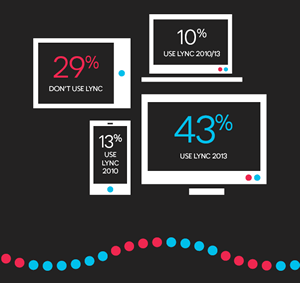If you were to ask your IT manager whether they have customers or users, what would they say? Though somewhat subtle in nature, this simple fact is an area that's overlooked way too often. If you think about it, when you are trying to acquire B2C or B2B sales, you consider them customers and treat them in the best way possible - we're all familiar with the mantra that the customer is always right.
If an IT organization really wants to improve from an operations perspective, they have to make a conscious decision to treat the people within their business units as customers instead of just users. If they're just users, you're probably sitting there saying; “It's Bob from accounting again. He's always got problems.” That's the crux of the issue here: Does IT treat people like they have to be here, or do you truly try to provide them the best service possible?
I think the approach of your IT department has a lot to do with how mature your company is and what you're really trying to drive. If you look at Gartner's ITScore, the top level of the operational maturity model is service aligned. That's when IT and the business are really in lock-step, working together to drive the business forward.
IT organizations that treat employees like customers are certainly more progressive, working towards that top level of maturity and putting in the necessary effort to achieve the vision. You are also starting to see many more traditionally IT-driven decision being made at the business unit level. This results I a real need for the customer-based approach. IT becomes a critical cog in the overall wheel of revenue.
If you adopt a singular mentality where you treat everybody like customers, it really helps to focus the organization and drive the right processes. You're neve in a position to say, “Do I treat employees differently from customers?” This is easily extended into the contact center. Everything is built around making sure you have a successful interaction with the customer. Could you imagine what would happen if you simply treated them as a ‘user'?
Once you make the shift and apply the ‘customer' mentality across the board, IT is no longer just looking at the cost of the bottom line. They're more focused on coming up with new and unique ideas that leverage technology to really drive things forward. Whether it's in the communications space or the payment space, it helps to shift your mentality and focus on provided a high quality, customer-based experience.
So How can an IT department get to the point where they understand the importance of treating people as customers? I think it really starts with defining process and making the conscious decision to say, “Let's treat our business units – and their employees - as customers. We're going to give them expectations for a level of service and proactively let them know how we're going to treat them.”

Certain IT organizations are now developing internal marketing and communications departments strictly to educate users within their business about new capabilities and features. Marketing is no longer only focused on external customers. Instead, it's catering to both internal and external customers. Those are some of the first tangible steps that need to be taken in order to really become successful at driving the change needed to treat employees as customers instead of users.
It's not an easy process, and not enough companies get the importance of this mentality. It really comes down to the fact that it requires change, and change is hard to drive. If you think about people who are really able to successfully drive change on a large scale, there aren't too many that easily come to mind. People like Steve Jobs and Bill Gates are examples of visionary leaders who wanted to have an aligned organization and really drove change.
This isn't just the ability to paint a vision, but also the ability to have the lieutenants to execute on that vision. I don't see it enough—we see it more in the service provider space where they have to treat their users as customers. In the enterprise, though, it's still evolving and we only see it being implemented by organizations that are the best of the best.